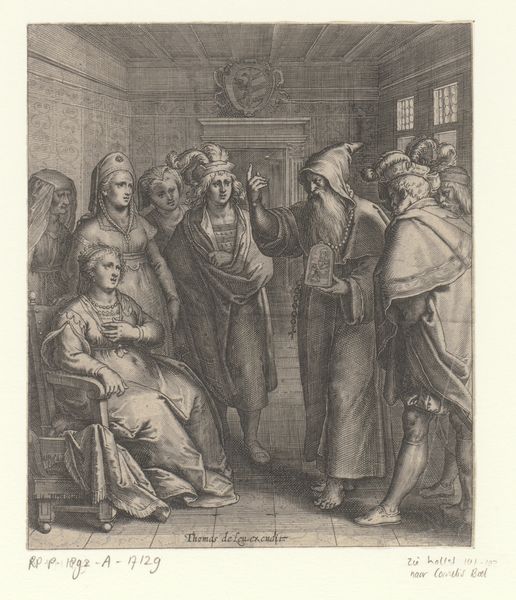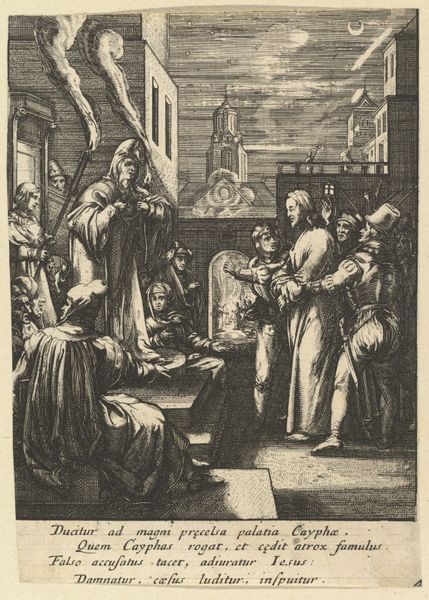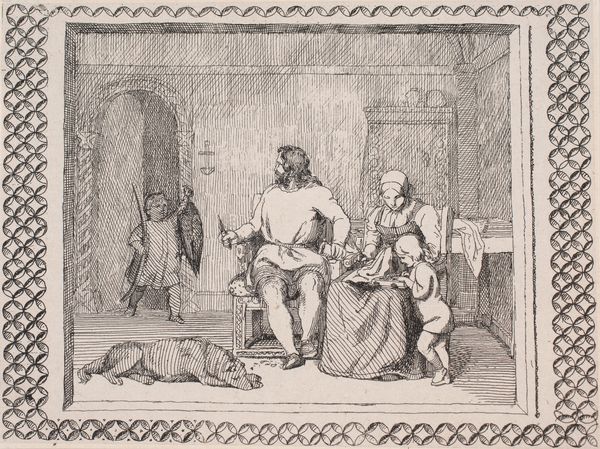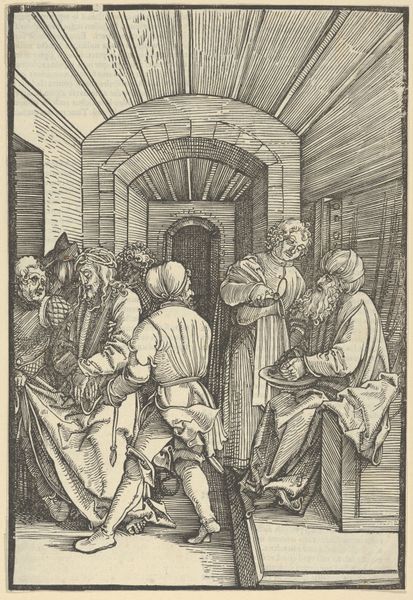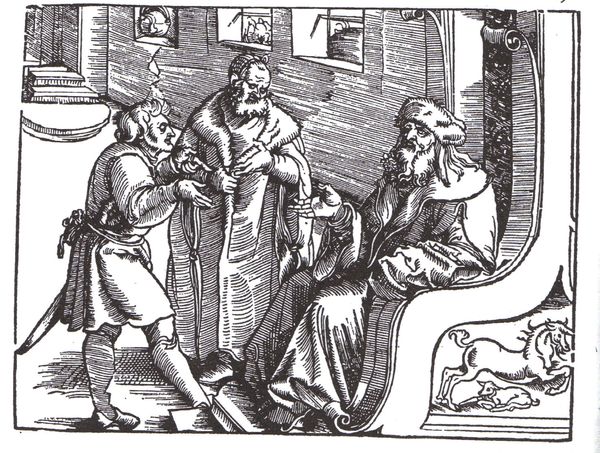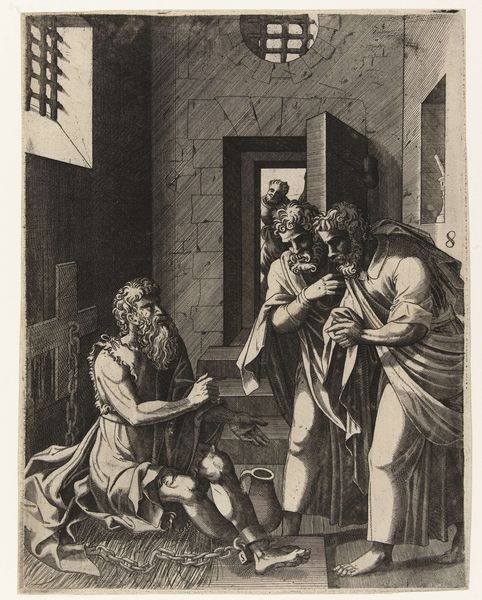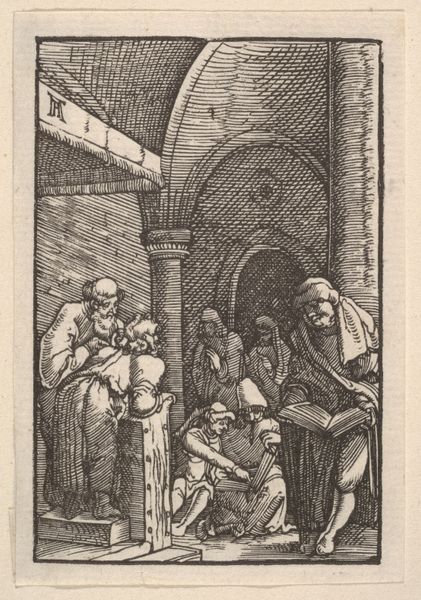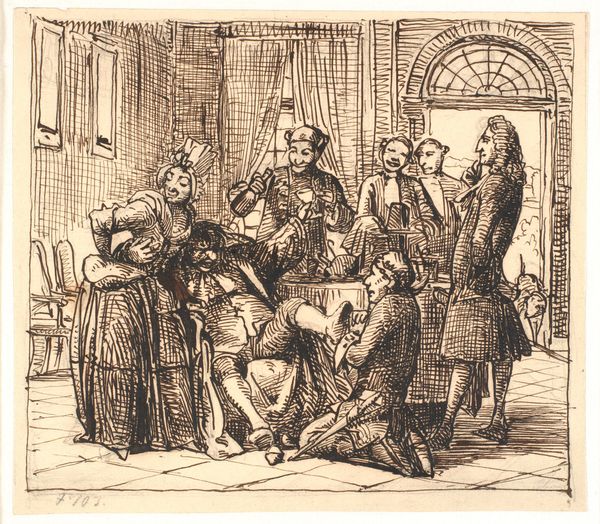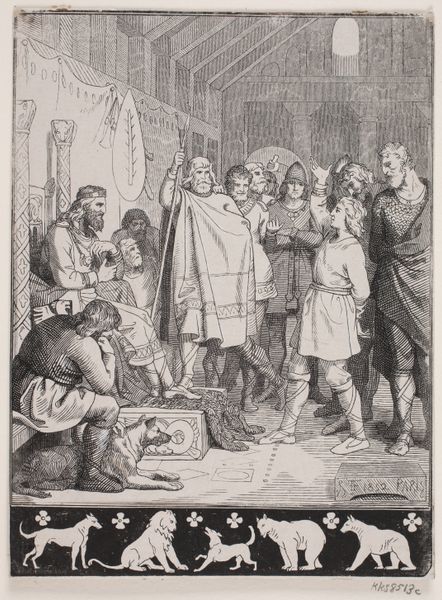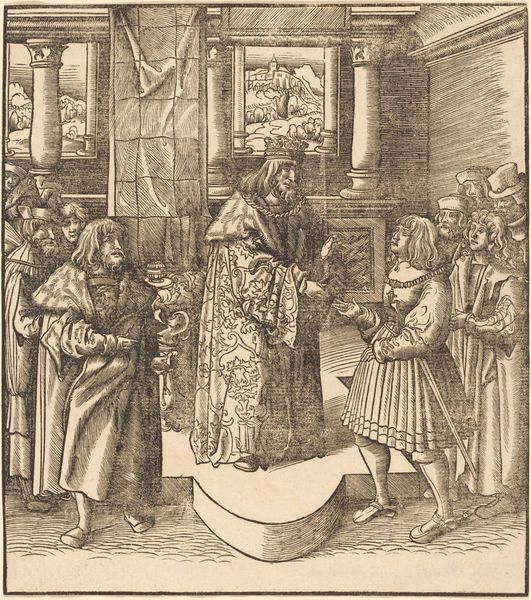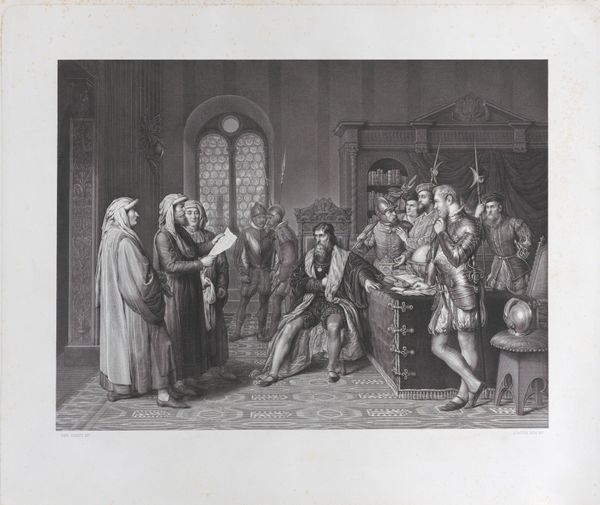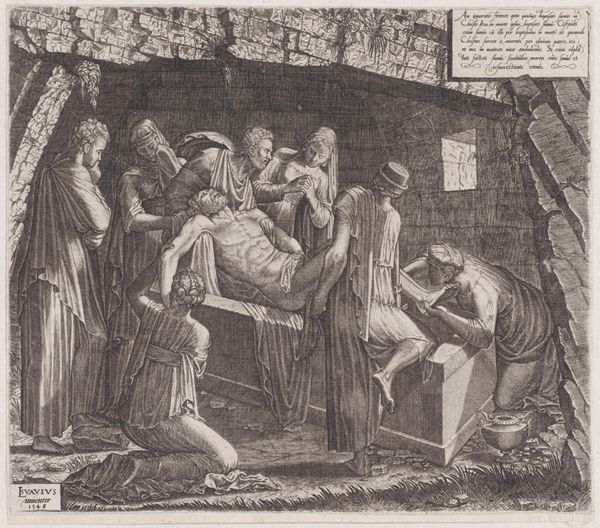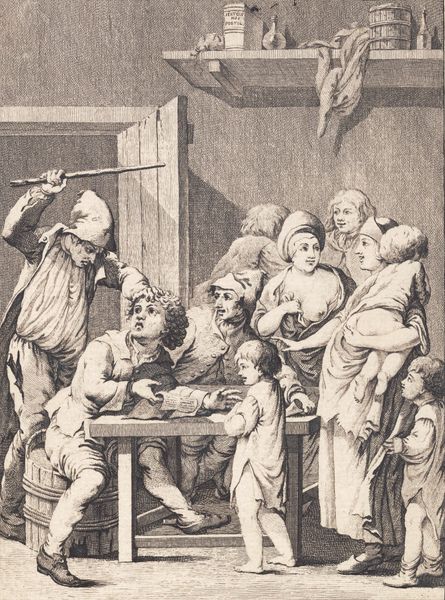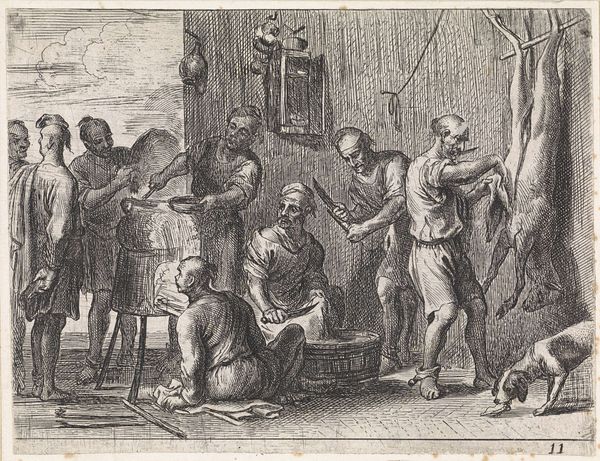
print, woodcut
# print
#
woodcut
#
genre-painting
Dimensions: 136 mm (height) x 138 mm (width) (bladmaal)
Curator: What an intriguing scene. The 1885 woodcut "Uglspil som doktor" by Balzer Dahl, housed here at the SMK, presents a compelling genre scene. It seems quite bleak and… well, unsettling. Editor: Unsettling is definitely the word. The monochrome palette amplifies that feeling, casting a rather oppressive mood over what looks like a rudimentary infirmary or perhaps even an almshouse. Curator: Indeed. Dahl masterfully uses the woodcut technique to highlight social themes. What do you think about how illness is visually presented in relationship to class structures? Consider the stark differences in patient appearance and the setting itself. Editor: The characters, undeniably caricatures, reflect specific societal prejudices toward the ill and the impoverished. I see a space where disease amplifies pre-existing power imbalances, with the doctor holding sway as a symbol of limited healthcare access. Notice his almost priestly garb, suggesting authority and a detachment from the suffering bodies he’s supposedly there to help. Curator: The perspective gives us the sense of being observers, almost voyeurs, doesn’t it? This reinforces the period’s cultural understanding and misunderstanding, as well as fears, concerning illness and marginalized people. We need to also think about how the figures contribute to reinforcing specific, culturally constructed, narratives. Editor: Absolutely, and those narratives continue to have echoes today, informing how society often still views illness, poverty, and even healthcare provision. Take the presence of specific implements in the scene – a broom in the foreground, bottles lining the shelves behind. These seemingly ordinary objects are highly political. The objects act almost as signifiers that underscore themes related to uncleanliness and access to adequate care. Curator: It prompts us to think critically about the power dynamics embedded in supposedly objective depictions of medical spaces and the treatment of vulnerable communities. Editor: I think you’re absolutely right. This isn’t just a representation of sickness, it’s a representation of societal sickness. Thanks for pushing my interpretation to new spaces; I will carry that reflection into the museum with me. Curator: And for me, I am going to go reflect further on how representations of illness act to exclude and re-marginalize in our cultural understandings.
Comments
No comments
Be the first to comment and join the conversation on the ultimate creative platform.
